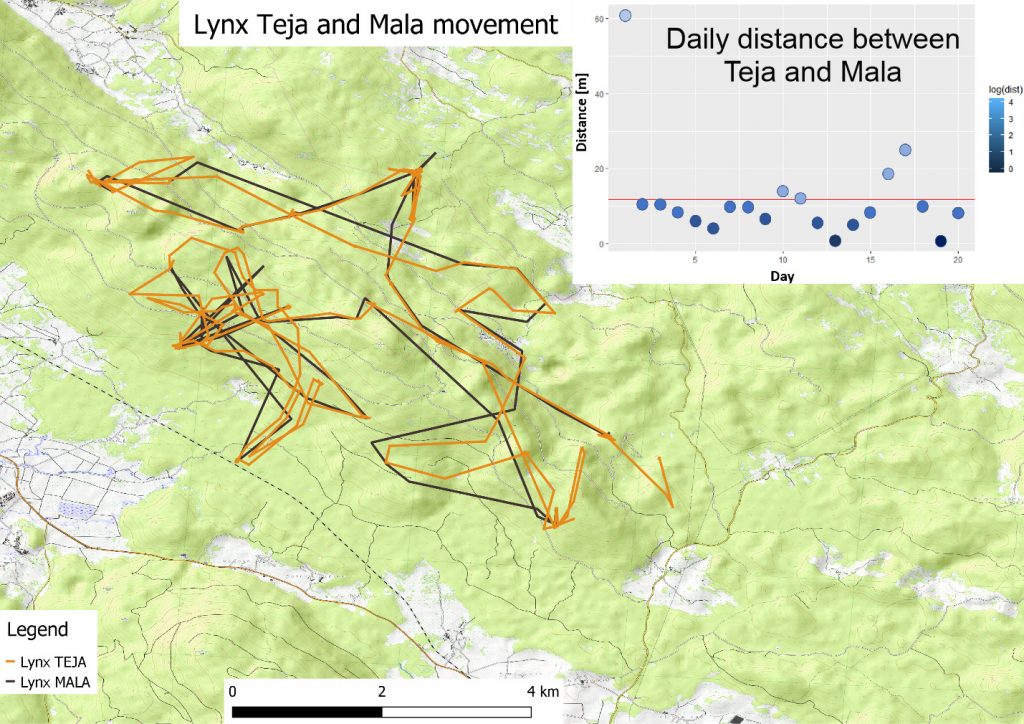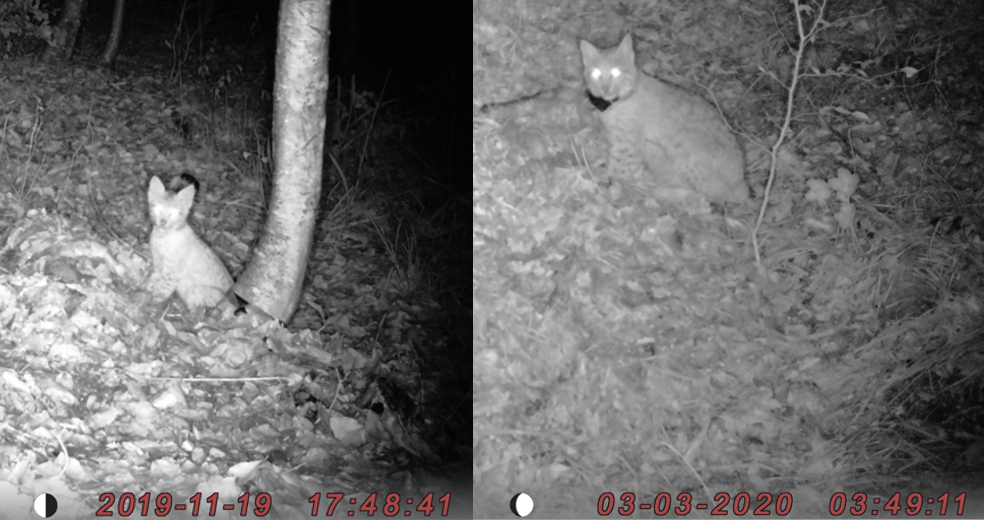We already reported in January, that researchers from Biotechnical Faculty, successfully collared lynx Teja’s kitten Mala. Since then, we have been closely monitoring their movements. Unfortunately, Teja’s collar dropped off on February, 8 (as planned), so we got only 20 days of data from both collars simultaneously. In that period, they have been moving close together all the time. On the graph, you can see that the daily distance between them doesn’t exceed 100 meters.

Map of Teja and Mala movements from January to February 2020. Graphics: Jaka Črtalič, LIFE Lynx
Teja is taking good care of her offspring. Since Mala’s birth (August 2019) until March 15, 2020, she has caught approximately 26 roe deer’s. Teja is very cautious at the prey sites. Especially in the first few months after Mala’s birth, Teja always came first to check the kill site and only after her »secure check«, she brought Mala to the site. Mala always ate first, however, they always ate individually.
Three months after the collaring, Mala is still with her mother, but Teja’s behavior at the prey site changed a little bit. Teja was seen to eat first at recent prey sites and there is more and more time difference between their visits to the prey sites. It seems that Mala will soon be forced to become more and more independent.

Mala’s first photo capture (November 2019, left) and Mala’s last photo capture (March 2020, right). Photo: Franc Kljun and Jaka Črtalič, LIFE Lynx
Winter has fortunately been very mild that is why Mala is in good shape right now and grows really fast. We estimate that since Mala’s capture she has gained about 5 kilograms and already grew permanent teeth. She now has to improve her hunting skills since she will soon need to become independent.
